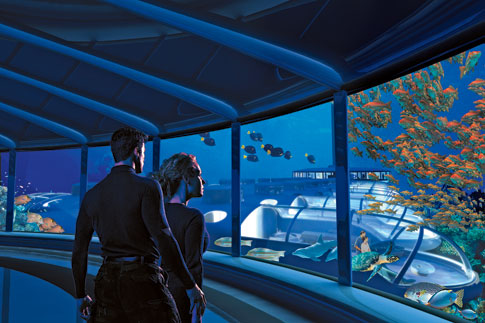Prediction: I will never live in an undersea colony nor a space one. Not unless the only other option is living in Bay Ridge. Then, sure. But if you care to not reside on solid ground, underwater habitats are already feasible. From Rachel Nuwer at the BBC:
“According to [Ian] Koblick, the technology already exists to create underwater colonies supporting up to 100 people – the few bunker-like habitats in operation today providing a blueprint. ‘There are no technological hurdles,’ Koblick says. ‘If you had the money and the need, you could do it today.’ Beyond that number, technological advances would be needed to deal with emergency evacuation systems, and environmental controls of air supply and humidity.
With safety being paramount, operators assure underwater habitats are running smoothly by monitoring life support systems – air composition, temperature and humidity – from the surface. Above the National Oceanic and Atmospheric Administration’s Aquarius Reef Base, the third of the three existing facilities (which accommodates up to six aquanauts at a time), a bright yellow circular disc tethered to the undersea lab 60ft (18m) below collects data from a variety of sensors and sends it to shore via a special wireless internet connection. Future habitats could use satellites to communicate this important information. For now, energy independence is still a challenge. Sustainable future options might include harnessing wave action or placing solar panels on the surface.
Making larger habitats with multiple modules made of steel, glass and special cement used underwater would be simpler than trying to create one giant bubble. These smaller structures could be added or taken away to create living space for as many people as desired. Most likely, we wouldn’t want to build any deeper than 1,000ft (300m), because the pressures at such depths would require very thick walls and excessive periods of decompression for those returning to the surface. Koblick and his colleagues did not experience any ill effects from living below the surface for around 60 days, and he thinks stints up to six months would be feasible.”

